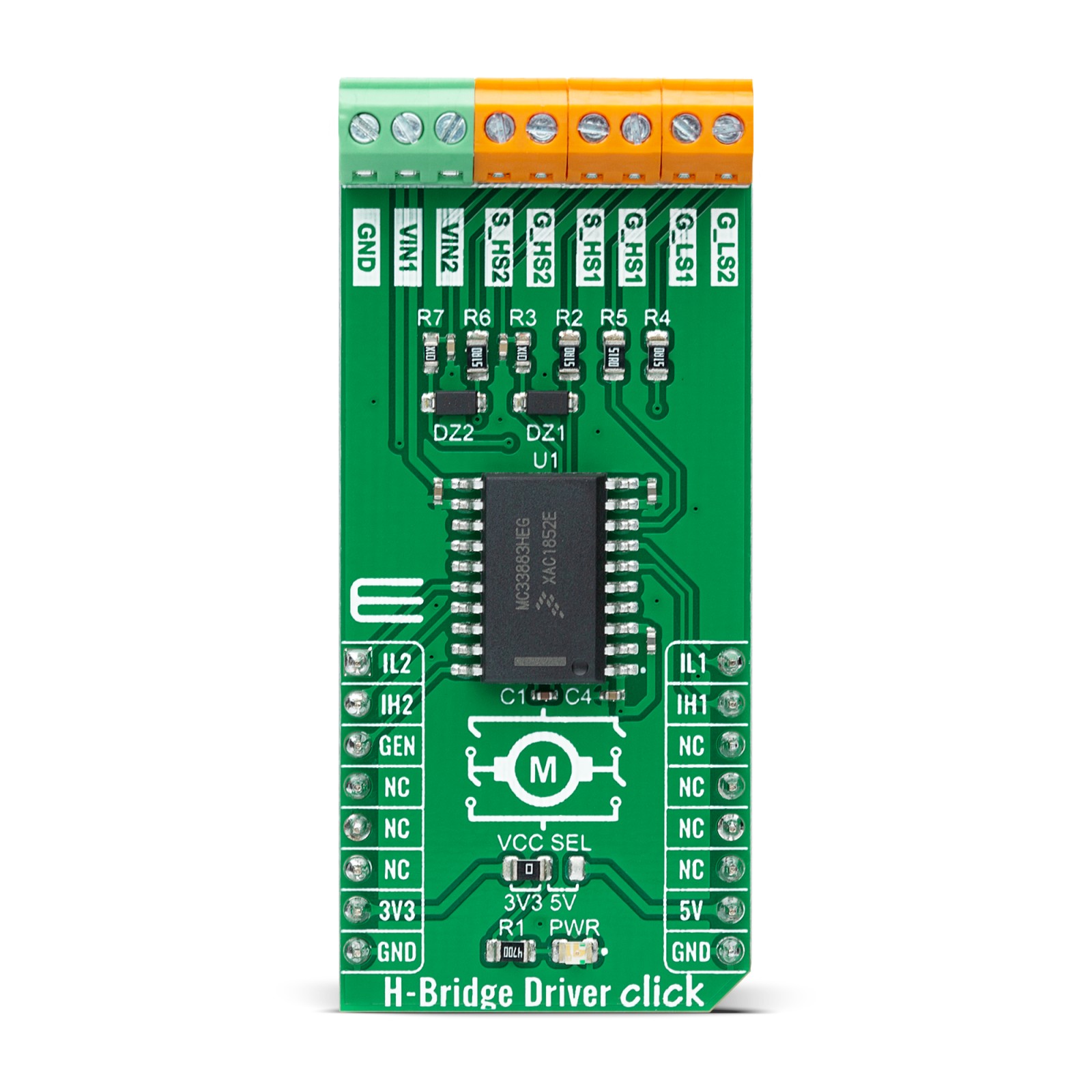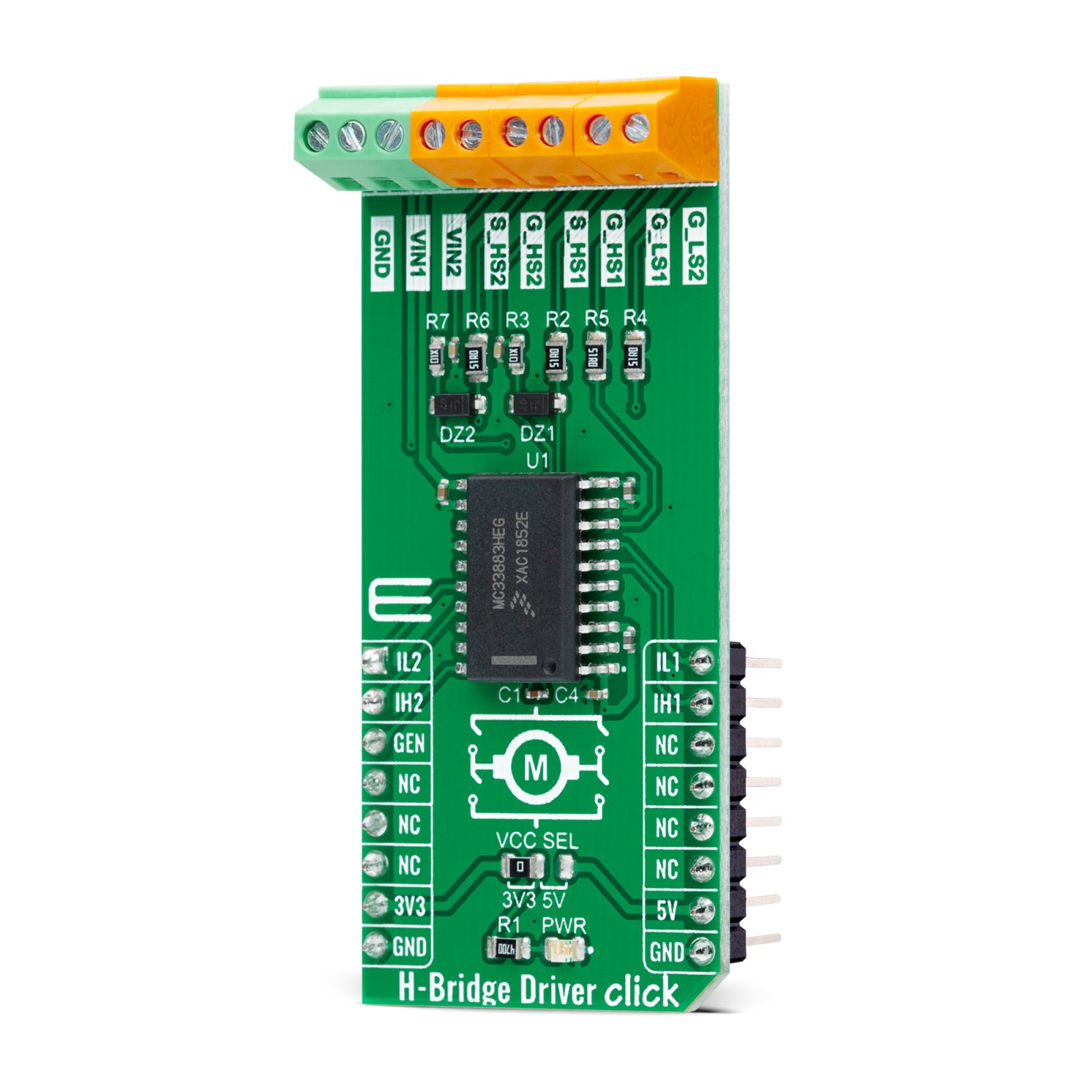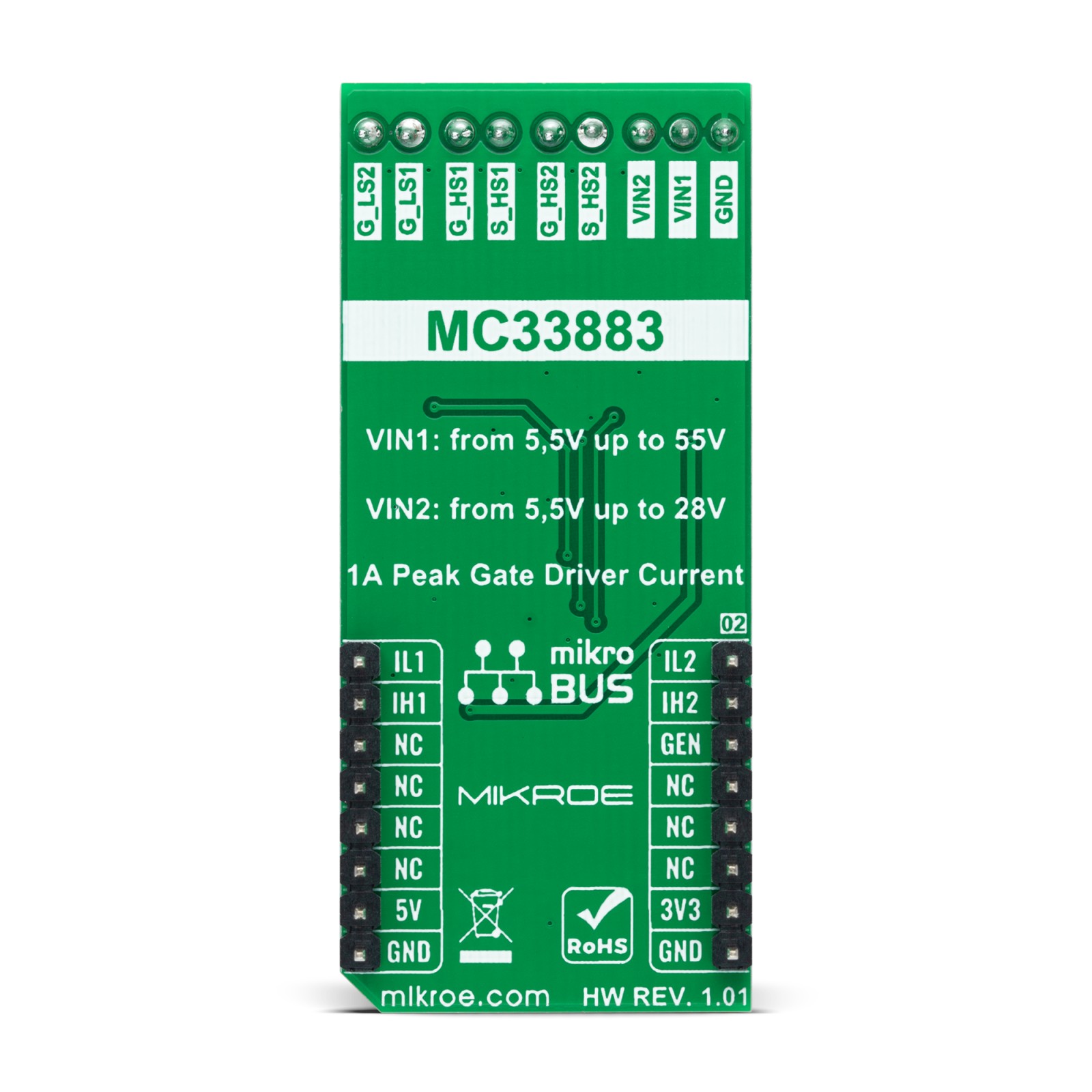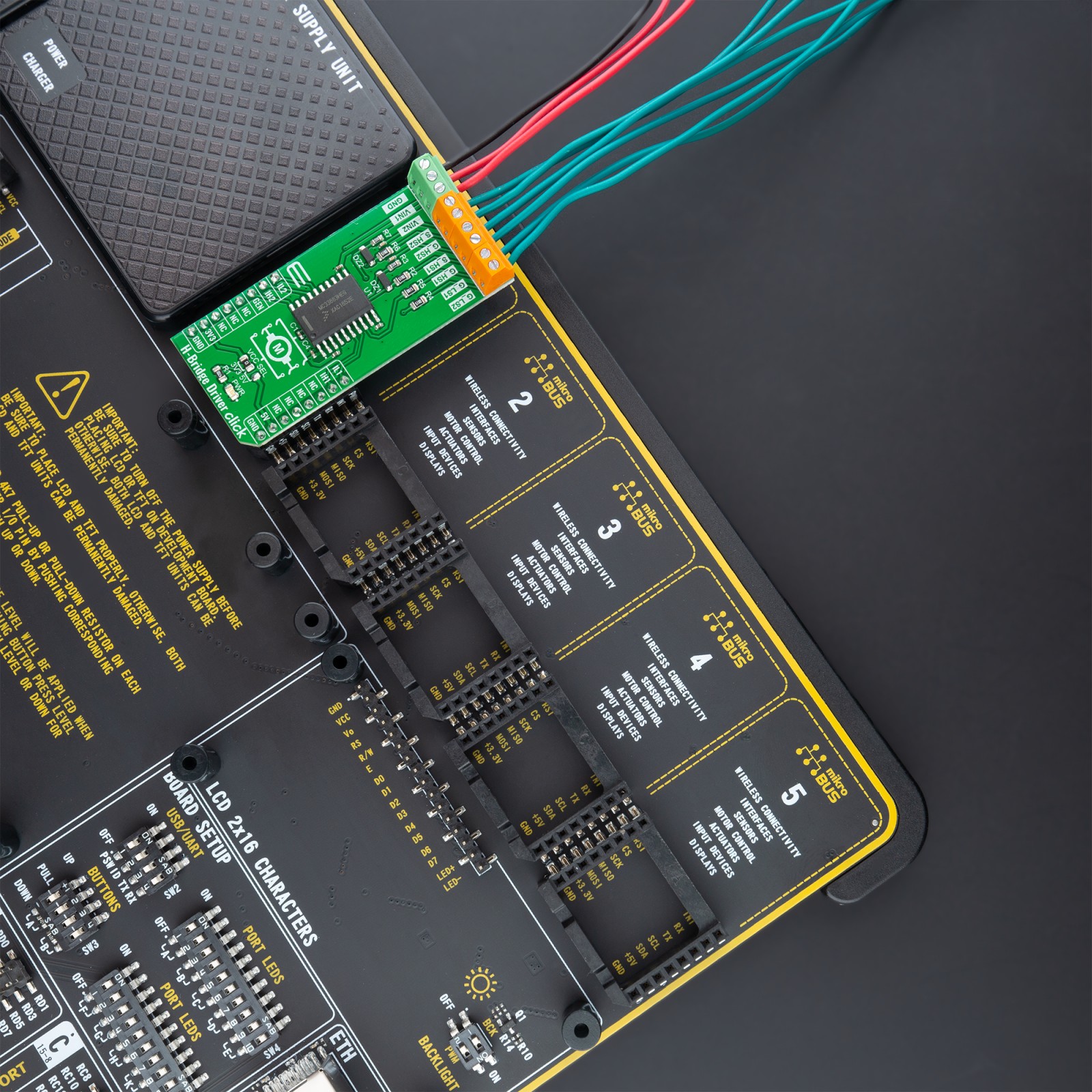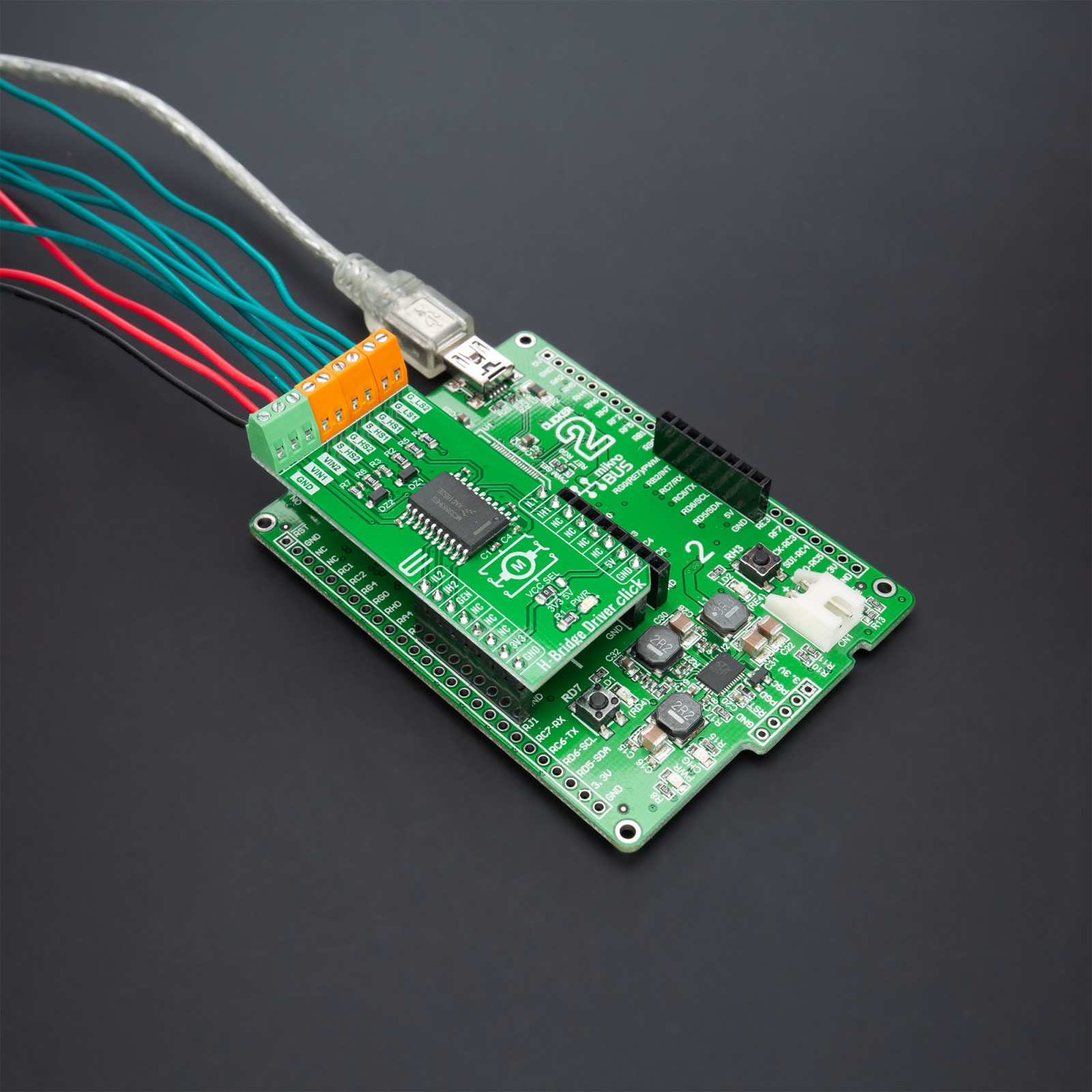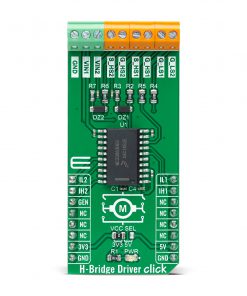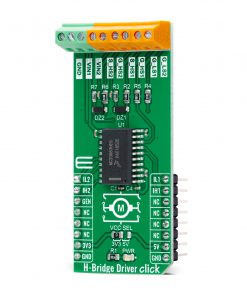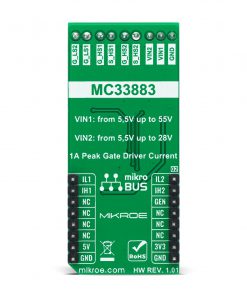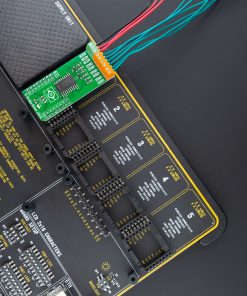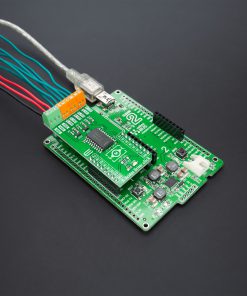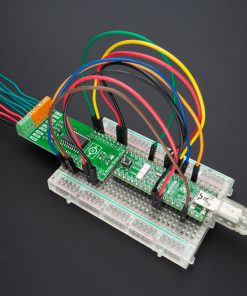Subtotal: R1,380.00
H-Bridge Driver Click
R625.00 ex. VAT
H-Bridge Driver Click is a compact add-on board that contains an H-bridge gate driver, also known as a full-bridge pre-driver. This board features the MC33883, an H-Bridge gate driver with an integrated charge pump and independent high and low side gate drive channels from NXP Semiconductors. The gate driver channels are independently controlled by four separate input pins, allowing the device to be optionally configured as two independent high side gate drivers and two independent low side gate drivers. Gate driver outputs can source and sink up to 1.0A peak current pulses, permitting large gate-charge MOSFETs to be driven and/or high pulse-width modulation (PWM) frequencies to be utilized. This Click board™ is suitable for automotive engine applications (electric pumps), energy storage systems (ESS), uninterruptible power supply (UPS), and more.
H-Bridge Driver Click is supported by a mikroSDK compliant library, which includes functions that simplify software development. This Click board™ comes as a fully tested product, ready to be used on a system equipped with the mikroBUS™ socket.
Stock: Lead-time applicable.
| 5+ | R593.75 |
| 10+ | R562.50 |
| 15+ | R531.25 |
| 20+ | R511.25 |

 LPG Click
LPG Click  Accel Click
Accel Click  Alcohol 3 Click
Alcohol 3 Click 